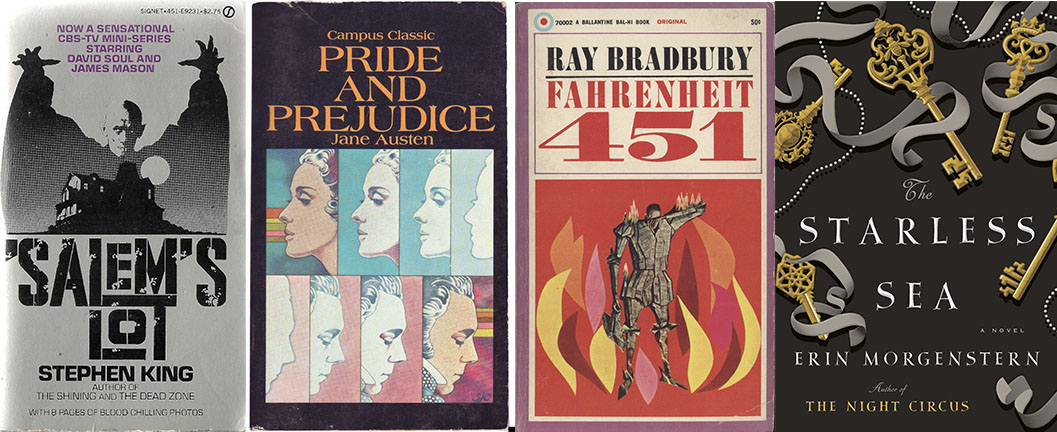Posted by Megan Dailey on 4th Dec 2020
Sequels and Sophomore Stories
This week I was surprised to discover a sequel to Ernest Cline’s sequel to Ready Player One had recently been released. Luckily, I had a credit waiting for me on Audible, so I quickly downloaded Ready Player Two and got to listening/reading. I loved RP1 so much that I read it with my sons who were nine and ten years old at the time, they also enjoyed it immensely. RP2 is Cline’s third novel (Armada is a stand-alone novel published in 2015).
I was happy to return to the worlds of Wade Watts and The Oasis, but was a bit disappointed that it just didn’t have the same vibrancy as the first book. I felt like we spent a little too much time hearing about Watts’ experiences as the new head of Gregarious Simulation Systems - it just smacked of a ghost-written tech magnate memoir for a spell. I’m certainly glad I was able to follow Parzival in his adventures in the virtual world; I’m just not sure this second journey into The Oasis went how I would’ve expected. Considering the book has just been released, I will spare you any spoilers.
This got me thinking about the curse of sophomore efforts and sequels - which has always been something I’ve been more cognizant of with bands and their second albums and screenwriters and their second films (oh, M. Night Shyamalan, why have you forsaken me!?!?). I think any artist who finds commercial acclaim with their first release (be it album, novel, movie, etc...) has a lot to live up to when they make their next venture. I’ve always assumed that an artist (or band or screenwriter) has had years to mentally formulate that first work. One’s first project is often a culmination of a lifetime of thought, trial, and error; and when that project is met with industry or commercial success, folks are most often clamoring for a follow up as quickly as possible. Sequels and sophomore projects often feel ... rushed to me. Very rarely do I find myself pleased that the follow-up has surpassed its predecessor. There are of course plenty of exceptions to this theory of mine; but I am always hopefully cautious when checking out version 2.0.
As far as sophomore albums go, there’s no denying that works such as Led Zeppelin II, Radiohead’s The Bends, Nine Inch Nails’ The Downward Spiral, or Amy Winehouse’s Back to Black are substantial in how each built upon the solid foundation of the first album then went on to present more amazing music (more well-rounded lists of successful and popular second albums frequently include Springsteen’s Wild, the Innocent, and the E Street Shuffle as well as The Freewheelin’ Bob Dylan - both seminal albums, just not my bag). I credit this to the artists making a concerted effort to explore in new directions, rather than just repeating the style or tone of their first releases. It is much the same with second novels, especially sequels. When writing a sequel, it is expected that an author would continue in much the same vein or style as the original story. A drastic change in style would most likely be met with disdain from those who had afforded the original with any success. It is when an author attempts to tell a completely new tale that there is opportunity to expand and create an entirely new universe. Some examples of successful (critically, commercially, or both) second novels I find to stand tall without any need to mention the first novel are Stephen King’s ‘Salem’s Lot, Jane Austen’s Pride and Prejudice, Ray Bradbury’s Fahrenheit 451, and Erin Morgenstern’s The Starless Sea.

I have to admit, I’ve never read Bradbury’s Dark Carnival so I can’t really speak to a change in style or substance; but Fahrenheit 451 has certainly earned its place in the pantheon of classic novels regardless of genre or era. Regarding ‘Salem’s Lot I have to say that while both sit within the horror genre, they have very little else in common other than being set in Maine. While Carrie delves more into the horror that is people and puberty with that heavy sprinkle of emerging paranormal powers, ‘Salem’s Lot is more traditional horror - exploring the difficulties of small town life with the added challenge of residents becoming vampires. The difference in tone between King’s first two novels establishes the promise of King’s long and prolific career which has ranged throughout many aspects of horror and occasionally tiptoeing outside the genre to incorporate aspects of fantasy, western, and even police drama into his books. Pride and Prejudice might possibly be the most highly regarded second novel in literary history to date. Austen herself considered it her favorite of her own books. It is a classic for a reason. Don’t allow yourself to believe that watching any of the fantastic film adaptations are a suitable substitute for reading the book. Finally, allow me to once again declare my love and admiration for the writing of Erin Morgenstern - The Night Circus resides firmly within my personal top five list - its follow-up The Starless Sea is another gorgeous work of Magical Realism set within a gorgeously constructed universe. Morgenstern’s second book proves her to be a powerhouse with a strong and vibrant imagination that will hopefully provide readers with many gorgeous tales for years to come.


